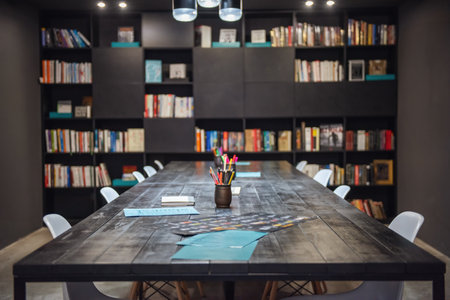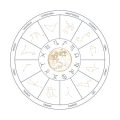Understanding the Importance of Vastu in Indian Workspaces
In India, the ancient science of Vastu Shastra is deeply interwoven with daily life and professional spaces. For generations, Indian offices have been designed not only for functionality but also to align with the fundamental principles of Vastu. This traditional knowledge system emphasizes the harmonious placement of elements within a space, aiming to balance natural energies and foster an environment conducive to success. When it comes to meeting room renovation, incorporating Vastu guidelines is believed to enhance spiritual harmony, boost productivity, and attract positive energy. Many business leaders in India attribute their growth and team synergy to Vastu-compliant workspaces, recognizing that such environments help reduce stress and improve decision-making. By understanding and respecting these principles, organizations can create meeting rooms that inspire collaboration, creativity, and prosperity—values cherished in Indian corporate culture.
Ideal Location for Meeting Rooms as per Vastu
When planning a meeting room renovation in India, it is vital to choose the right location as per Vastu Shastra principles. According to traditional Indian beliefs, the directional placement of a meeting room significantly influences success, harmony, and productivity within an organisation. Selecting a Vastu-compliant zone ensures better decision-making and smooth collaboration among colleagues.
Recommended Directions for Meeting Rooms
Vastu Shastra suggests specific directions and placements for meeting rooms within office premises to maximise positive energy. Here is a table summarising the most favourable directions:
| Direction | Vastu Significance | Purpose/Effect |
|---|---|---|
| North-West (Vayavya) | Best suited for meetings and discussions | Encourages movement, quick decisions, and successful collaborations |
| North-East (Ishanya) | Brings clarity and inspiration | Fosters innovative ideas and strategic planning |
| South-West (Nairutya) | Gives stability but may slow down processes if used for meetings | Best avoided for active discussions; suitable for senior management cabins instead |
| East | Symbolises growth and new beginnings | Ideal for brainstorming sessions and creative meetings |
Key Placement Tips for Success-Oriented Meeting Spaces
- Avoid placing meeting rooms in the South-East (Agneya) corner, as it can lead to conflicts and heated arguments due to its fiery energy.
- The entrance of the meeting room should ideally face North or East to attract positive vibrations and opportunities.
- If possible, locate the meeting room away from distractions such as restrooms or pantry areas to maintain focus during discussions.
- The centre of the office (Brahmasthan) should be kept open or free from heavy structures, including meeting rooms, as this is considered the energy core of the premises.
Cultural Insights for Indian Workspaces
In India, respecting Vastu while designing or renovating office spaces is more than a tradition—it’s seen as a way to ensure business prosperity and workplace harmony. By aligning your meeting room’s location with these ancient guidelines, you not only honour local culture but also create an environment conducive to collective growth and achievement.

3. Vastu-Approved Room Shape, Entrance, and Windows
When renovating a meeting room in India, adhering to Vastu principles regarding the shape of the room, entrance placement, and window orientation is crucial for fostering positivity and productive discussions. According to traditional Vastu Shastra, a square or rectangular room is highly preferred as it symbolises stability and balance—qualities essential for seamless communication and decision-making. Irregular shapes may lead to confusion or conflict within the team.
The direction of the entrance door plays a vital role in channelling positive energy into the meeting space. Ideally, the main entrance should face north or east. A north-facing door welcomes prosperity and clarity, while an east-facing one attracts new opportunities and intellectual growth. Avoid placing the entrance in the south-west corner, as it can cause sluggishness and hamper teamwork.
Windows are equally significant in maintaining a fresh flow of ideas. Vastu recommends that windows should be positioned on the north or east walls, allowing natural light and positive vibrations to enter. This not only energises the environment but also promotes transparency and open-mindedness among team members. South-facing windows are best avoided as they may let in excessive heat and negativity.
In summary, choosing a regular-shaped room with a north or east entrance and strategically placed windows can significantly impact the success of your renovated meeting room by supporting harmony, creativity, and effective collaboration.
4. Seating Arrangements and Direction for Success
In Indian culture, Vastu Shastra offers time-tested guidance to optimise the layout of meeting rooms, especially concerning seating arrangements and orientation. Following Vastu principles can significantly enhance communication, foster better decision-making, and create a harmonious environment for all participants. Below are key recommendations for arranging seats in your renovated meeting room to ensure maximum productivity and positive energy flow.
Importance of Direction in Seating
The direction in which people sit during meetings plays a crucial role in influencing their mindset and effectiveness. According to Vastu, each direction is associated with specific energies that can impact leadership, collaboration, and clarity of thought.
| Role | Recommended Seating Position | Direction to Face | Vastu Benefit |
|---|---|---|---|
| Chairperson / Leader | Head of the table (South or West side) | North or East | Authority, Clarity, Enhanced Decision-Making |
| Main Participants | East or North sides of the table | West or South | Creativity, Openness to Ideas, Active Participation |
| Guests / Clients | North-East corner if possible | Face South-West | Positive Impressions, Productive Dialogue |
Additional Vastu Tips for Meeting Rooms:
- Avoid seating anyone with their back to the main door. This can cause discomfort and reduce focus.
- The leader should never sit directly under a beam. Overhead beams create pressure and hinder clear thinking.
- Circular or oval tables are preferable over square ones. These shapes promote equality and free flow of communication.
- Avoid clutter near seating areas. Keep the space tidy for unobstructed energy movement.
Cultural Note:
Adhering to these Vastu-based arrangements is a common practice among Indian organisations aiming for prosperity and harmony. Integrating such concepts into your meeting room renovation not only aligns with Indian tradition but also reflects your commitment to holistic workplace well-being.
5. Colours, Decor, and Lighting: Traditional Perspectives
When renovating a meeting room in India, aligning colours, decor, and lighting with Vastu Shastra not only enhances aesthetic appeal but also fosters positive energy and productivity. According to traditional Indian beliefs, specific colours are linked to different directions and purposes. For example, light blue or green shades on the north or east walls encourage clarity of thought and growth, making them ideal for meeting spaces where decisions are made. Avoid dark reds or excessive black, as these can attract negativity or conflict.
Vastu-Approved Colour Palettes
Choose soft hues like off-white, beige, light yellow, or subtle pastels for the main walls. These shades are considered auspicious and create a calm yet focused environment—perfect for productive discussions. For accent walls, you may use gentle orange or gold tones in the south-east direction to stimulate creativity and communication.
Artworks and Decorative Elements
Select artwork that reflects harmony, progress, and Indian culture—such as images of the rising sun (symbolising new beginnings), flowing rivers (representing movement), or even motifs inspired by traditional Madhubani or Warli paintings. Avoid placing images depicting violence, isolation, or sadness in the meeting room. Brass or copper decorative pieces can be used in moderation to enhance positivity and bring a touch of Indian heritage.
Lighting Arrangements for Energy Flow
Adequate natural light is strongly recommended; ensure windows face the north or east whenever possible to invite abundance and optimism. In terms of artificial lighting, opt for soft white LED lights rather than harsh fluorescent bulbs. Layered lighting—combining ceiling fixtures with wall sconces or table lamps—helps balance illumination while creating a welcoming ambience. Dim corners should be avoided as they can stagnate energy according to Vastu principles.
By integrating these Vastu-friendly suggestions into your meeting room’s colours, decor, and lighting, you honour Indian traditions while supporting a successful and harmonious workspace renovation.
6. Common Vastu Mistakes to Avoid During Renovation
While renovating a meeting room in India, overlooking basic Vastu Shastra principles can lead to unintended negative effects on productivity and harmony. Here are some frequent errors and practical remedies for each:
Ignoring the Room’s Entrance Placement
The entrance door should ideally be in the north or east direction. Placing the entrance in the south-west can restrict opportunities. Tip: If relocation is not possible, use bright lighting and Vastu pyramids near the door to mitigate effects.
Incorrect Seating Arrangements
Decision-makers or leaders sitting with their back to the north or east may face obstacles. Tip: Ensure that important attendees face north or east during meetings, fostering clarity and authority.
Use of Dark Colours and Heavy Décor
Dark colours and overly heavy décor can create a gloomy atmosphere, affecting mood and communication. Tip: Opt for light shades like cream, white, or pastel blue; keep décor minimal yet elegant.
Neglecting Natural Light and Ventilation
Poor ventilation and lack of sunlight diminish positive energy flow. Tip: Incorporate large windows on the north or east walls and use sheer curtains to allow ample sunlight.
Placing Electrical Equipment in Wrong Zones
Laptops, projectors, and other electronics should be positioned in the south-east zone (the Agni corner) for smooth operations. Tip: Rearrange equipment as per Vastu zones to avoid frequent technical glitches.
Piling Unnecessary Clutter
Clutter blocks both physical movement and positive energy. Tip: Keep the meeting area tidy by using smart storage solutions; dispose of unused items regularly.
Future-Proofing Your Meeting Room Renovation
To avoid repeating these mistakes, always consult a local Vastu expert before making structural changes. Regularly review Vastu compliance as your office evolves. This approach ensures long-term success, energetic balance, and a productive environment for all stakeholders.


